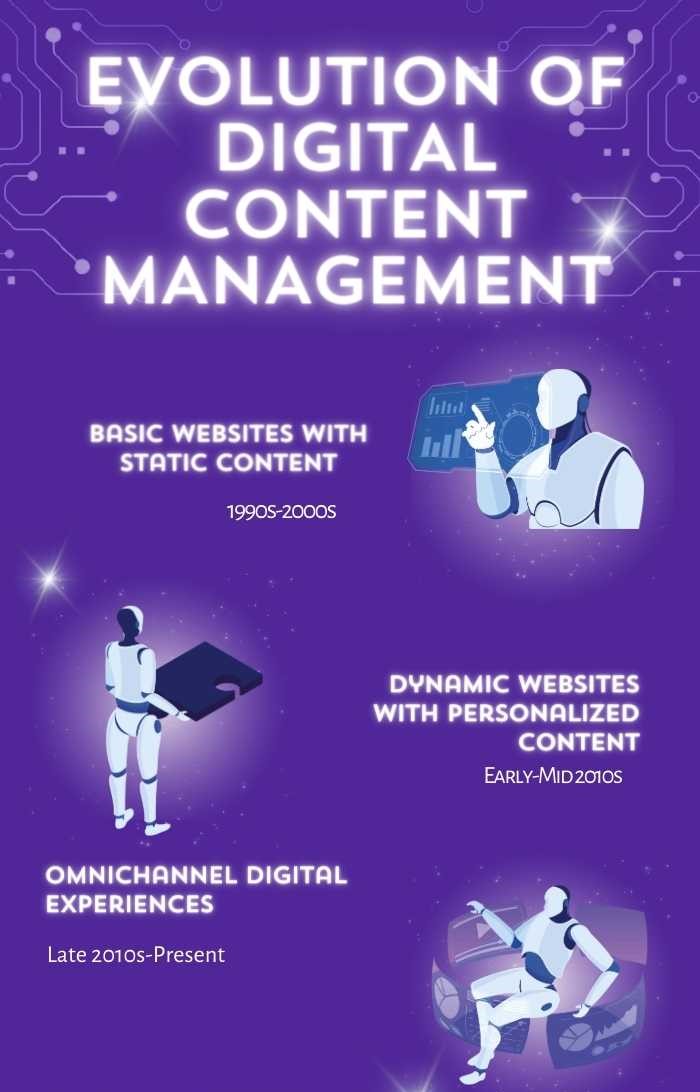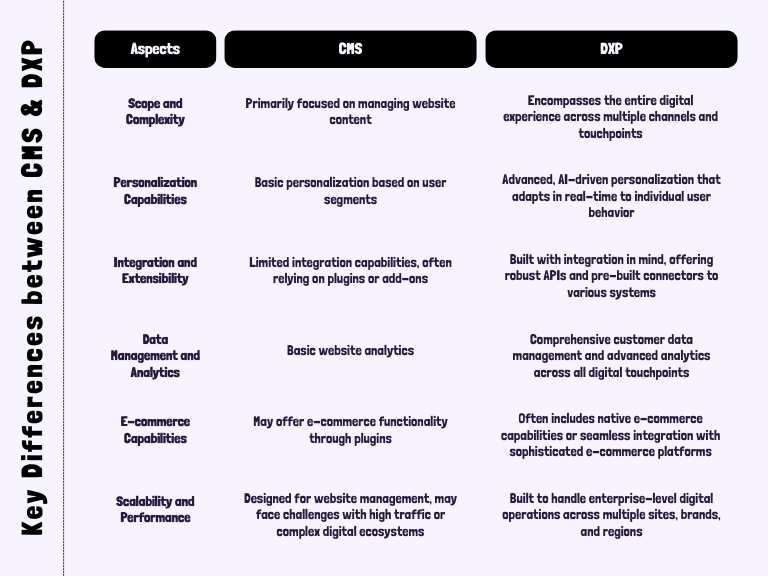DXP vs CMS: Understanding the Differences

Organizations are constantly seeking the most effective tools to manage their online presence and engage with their audience. Two terms that often come up in these discussions are Content Management Systems (CMS) and Digital Experience Platforms (DXP). While both play crucial roles in digital strategies, they serve different purposes and offer distinct capabilities. Understanding the differences between DXPs and CMSs is essential for businesses aiming to optimize their digital transformation efforts.
The Evolution of Digital Content Management
Before diving into the specifics, it's important to understand the context in which these technologies have emerged. The digital realm has undergone a significant transformation over the past two decades:

This evolution reflects the changing expectations of digital consumers and the increasing complexity of digital ecosystems. Let's explore how CMSs and DXPs fit into this landscape.
Content Management Systems (CMS): The Foundation of Digital Content
A CMS is a software application that allows users to create, edit, organize, and publish digital content. Traditionally, CMSs have been primarily focused on website management.
Key Features of a CMS include content creation and editing tools, digital asset management, user role management, basic workflow capabilities, and templates and themes for consistent design.
CMSs excel at managing website content, providing a user-friendly interface for non-technical users, ensuring consistent branding across web pages, and basic content personalization. Popular CMS examples include WordPress, Drupal, and Joomla.
Digital Experience Platforms (DXP): The Next Generation of Digital Engagement
A DXP, on the other hand, is a more comprehensive and integrated set of technologies designed to enable organizations to digitalize business operations, deliver connected customer experiences, and gather actionable customer insights across all digital touchpoints.
Key Features of a DXP include omnichannel content management and delivery, advanced personalization and AI-driven insights, customer data management and analytics, E-commerce capabilities, marketing automation tools, API-first architecture for seamless integrations, and multi-site and multi-language support.
DXPs excel at creating cohesive customer journeys across multiple touchpoints, delivering highly personalized experiences at scale, integrating various digital tools and services into a unified platform, and providing deep insights into customer behavior and preferences.
Examples of DXPs include Drupal, Adobe Experience Platform, Sitecore, and Liferay DXP.
Key Differences Between DXPs and CMSs

Choosing Between a DXP and CMS
The decision between a DXP and a CMS depends on various factors:
- Business Goals: If your primary focus is managing a website or blog, a CMS might suffice. If you're aiming for a comprehensive digital transformation and omnichannel customer engagement, a DXP is more appropriate.
- Organizational Size and Complexity: Larger enterprises with multiple brands, regions, or complex digital ecosystems will benefit more from a DXP's capabilities.
- Customer Journey: If your customers interact with your brand across multiple touchpoints (web, mobile, IoT devices, etc.), a DXP provides better tools for creating cohesive experiences.
- Technical Resources: DXPs often require more technical expertise to implement and maintain fully. Ensure you have the necessary resources or partnership with a skilled implementation team.
- Budget: While DXPs offer more comprehensive features, they also come with a higher price tag. Consider your budget and the potential ROI of a more advanced platform.
- Future Growth: Even if your current needs are met by a CMS, consider your future digital strategy. A DXP might be a better long-term investment if you anticipate expanding your digital presence.
The Hybrid Approach: CMS as Part of a DXP
It's worth noting that the line between CMSs and DXPs is becoming increasingly blurred. Many modern CMSs are expanding their capabilities to offer more DXP-like features. Conversely, DXPs often include robust content management capabilities at their core.
Some organizations opt for a hybrid approach, using a headless CMS for content management while leveraging other DXP components for advanced digital experience capabilities. This approach can offer flexibility and scalability while potentially reducing complexity and cost.
Aligning Technology with Digital Strategy
In the end, the choice between a DXP and a CMS should be driven by your organization's specific needs, goals, and digital maturity. While CMSs continue to play a crucial role in managing digital content, DXPs offer a more comprehensive solution for organizations looking to deliver exceptional, personalized digital experiences across all touchpoints.
As you evaluate your options, consider not just your current needs but also your future digital aspirations. The right platform should not only address your immediate challenges but also provide a foundation for ongoing digital innovation and growth.
Whether you choose a CMS, a DXP, or a hybrid approach, the key is to align your technology choices with your overall digital strategy. By doing so, you'll be well-positioned to create compelling digital experiences that engage your audience, drive business growth, and keep you competitive in the ever-evolving digital landscape.




